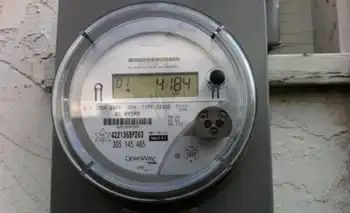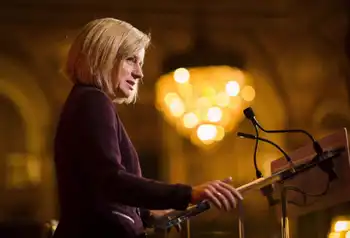Climate change bill inspired by cap-and-trade
By Boston Globe
NFPA 70e Training - Arc Flash
Our customized live online or in‑person group training can be delivered to your staff at your location.

- Live Online
- 6 hours Instructor-led
- Group Training Available
The bill would set strict new limits on greenhouse gases, cutting emissions by 20 percent by 2020 and by 85 percent by 2050. Pollution credits would be given or auctioned off to utilities and businesses, and would theoretically rise in value as the cap is lowered over time - similar to the Northeast Regional Greenhouse Gas Initiative, which set up a cap-and-trade system for Northeast power plants with the goal of cutting emissions by 10 percent by 2018.
Like the Northeast compact, the new legislation also places a significant emphasis on energy efficiency and renewable energy, albeit in a more direct way. The bill would require utilities to operate 10 to 15 percent more efficiently by 2020 than they do now and require 25 percent of America's electricity demands to be met with wind, solar, biomass, and other renewable sources by 2025.
"My view is that the legislation will create clean energy jobs that cannot be shipped overseas, reduce our dependence on foreign oil, and make America the global leader in energy technology," said Representative Edward Markey of Massachusetts, chairman of the House Select Committee on Energy Independence and Global Warming and coauthor of the bill.
The legislation, a 600-page behemoth designed to drastically alter the country's carbon footprint, will be a starting point for Congress to address global warming, a top agenda item for President Obama, who has jettisoned the Bush administration's skepticism on the issue. The House committee in charge of the legislation plans to vote on the bill next month. Environmentalists are urging Congress to adopt a global warming policy before international talks scheduled for December in Copenhagen, where leaders have agreed to update the Kyoto Protocol, which Bush refused to sign.
The bill sets slightly more aggressive goals than Obama's plan. The legislation, however, does not tackle one of the most politically charged aspects of regulating greenhouse gases by remaining silent on how many pollution credits would be auctioned off and how many would be doled out by the government for free. Markey and Representative Henry Waxman of California, chairman of the House Energy and Commerce Committee, say that would be settled in the coming weeks, as lawmakers weigh in on what they would be willing to accept.
Whether Congress can agree in time for Copenhagen remains unclear. The legislation is extraordinarily complex, and different aspects of the bill have foundered on Capitol Hill in the past. Lawmakers from large coal-producing states are reluctant to embrace anything that would penalize the coal industry too harshly, and conservative Democrats and Republicans have raised concerns about how much the bill would cost consumers.
Markey acknowledged that passing the legislation would be a challenge, but he noted that the Environmental Protection Agency is poised to regulate greenhouse gases on its own, which he said could spur Congress to preempt the agency. The Supreme Court ruled two years ago that the EPA had the authority to regulate greenhouse gases if it found them to be a health danger. The Bush administration took little action, but the Obama administration is moving ahead swiftly.
Ian Bowles, secretary of the Massachusetts Office of Energy and Environmental Services, said the legislation dovetails neatly with emissions-reduction and renewable-energy policies already on the books in the Bay State.
"The bill builds on and accelerates instead of replacing programs in places like Massachusetts that have been successful for the last decade or more," he said in a telephone interview.
The renewable energy standard, however, is likely to be a challenge for Massachusetts and other Northeastern states, where there is less open space and more crowded urban centers, leaving less room for building large new renewable facilities. Markey noted that New England has a tremendous potential to generate wind through offshore windfarms, but the enormous legal and regulatory hurdles that have faced the Cape Wind proposal illustrate the difficulties involved.
Seth Kaplan of the Conservation Law Foundation said Massachusetts has plenty of sun, wind, and other resources to generate a significant amount of renewable energy, and in some cases the state can continue to do more of what it does now - import renewable energy from Canada.
But he said finding sites for wind farms and solar panels might become easier with a renewed sense of urgency. "Our decisions need to be shaped by the fact that we have this mandate to save ourselves," he said.











